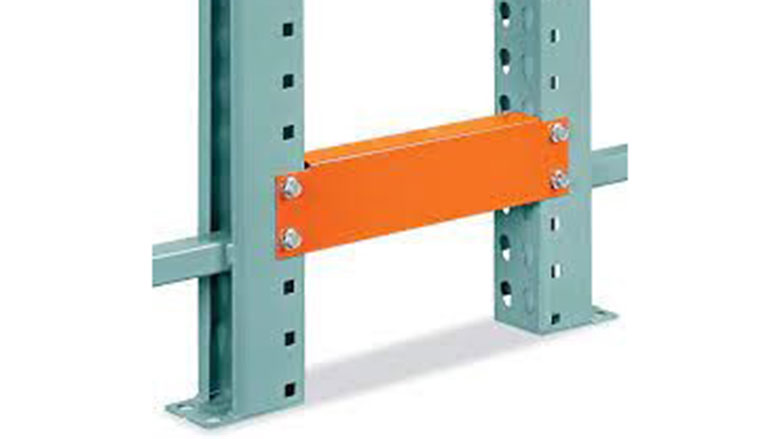Eye on Safety: Racking Safety
Know your flue space requirements.

There are very few work-related emergencies that carry more risk and danger than fire events. Many regulations related to fire prevention have been developed to protect workers and facilities with the National Fire Protection Association (NFPA) being responsible for many of them.
Today’s article focuses on an area of fire safety that many are unaware of, flue space requirements. If you’re unclear what this is, or have never heard the term, you’re not alone. This article will provide you with an understanding of flue spacing and why it is so important when installing industrial racking systems.
Flue spaces are clear vertical lines of sight from the floor up to the ceiling within rack storage areas. There are two types of flue spaces; transverse flues and longitudinal flues. Transverse flues are the spaces between rows of storage in the direction of loading. Longitudinal flues are the spaces between rows of storage perpendicular to the direction of loading that are less than two feet in width (longitudinal flues greater than that are defined as aisles). See the picture below to better understand the difference between them.
Flue spaces are necessary for rack storage arrangements to allow heat from a fire to vent vertically. Without them, ceiling-level sprinklers cannot operate effectively because they may not operate as effectively or quickly as they should.
Proper flue spacing slows down the horizontal fire spread within the racking system by allowing sprinklers to disperse water through the established vertical spaces between stored product and the racking themselves. Flues spaces are also necessary to allow sprinkler water to reach the base of the fire down through the racks. Without adequate water reaching the burning materials on lower levels of racking near the ground, the fire may not be controlled. Unless in-rack sprinklers are installed below every storage tier, maintaining flue spacing is a critical requirement for overhead sprinkler systems to work as intended.
Keeping flue spaces clear of blockages is an important consideration for warehouses that use industrial racking. Poor racking design, oversized products/pallets, and how material is placed on racking are all potential pitfalls for maintaining transverse and longitudinal flue spaces.
According to the NFPA, there must be a 6-inch transverse flue space between loads within a rack structure. Snap-in dividers and rack spacers can help create and maintain this spacing. Without these engineering controls, it puts the responsibility on machine operators to stage material on racks in a manner that maintains the six-inch spacing.
For longitudinal spacing, NFPA requires a minimum longitudinal flue space of 3 inches to allow fire ventilation along with water penetration from the sprinkler system above. When placing racks back-to-back, 3 inch spacing is required for both installations resulting in the need to have at least 6 inches of space. The images below provide examples of spacers that can be used to ensure proper spacing.


Another factor to consider is the depth of your loads. The common pallet/load depth is 48 inches deep. However, if longer pallets/loads are being stored in a rack, an alternative longitudinal flue spacing may be required. For example, if you have pallets that overhang the racking by 3 inches, your flue spacing requirement must account for the overhang. The calculation for this is straightforward (3-inch overhang x 2 pallets front and rear + 6 inches Longitudinal Flue = 12 inches of spacing needed between rows.)
In addition to the racking spacers mentioned above, load stop beams can be used. They are very effective in maintaining flue spacing as the load stops prevent pallets/loads from overhanging the back of racks. Rack straps and safety nets are also products that help to maintain spacing.
In addition to the NFPA guidelines for flue spacing, your local municipality may have additional requirements to be adhered to. Before installing any racking, check with local authorities (i.e. fire marshall, fire departments, etc…) to ensure your racking installation meets regulatory requirements specific to your location.
Looking for a reprint of this article?
From high-res PDFs to custom plaques, order your copy today!




